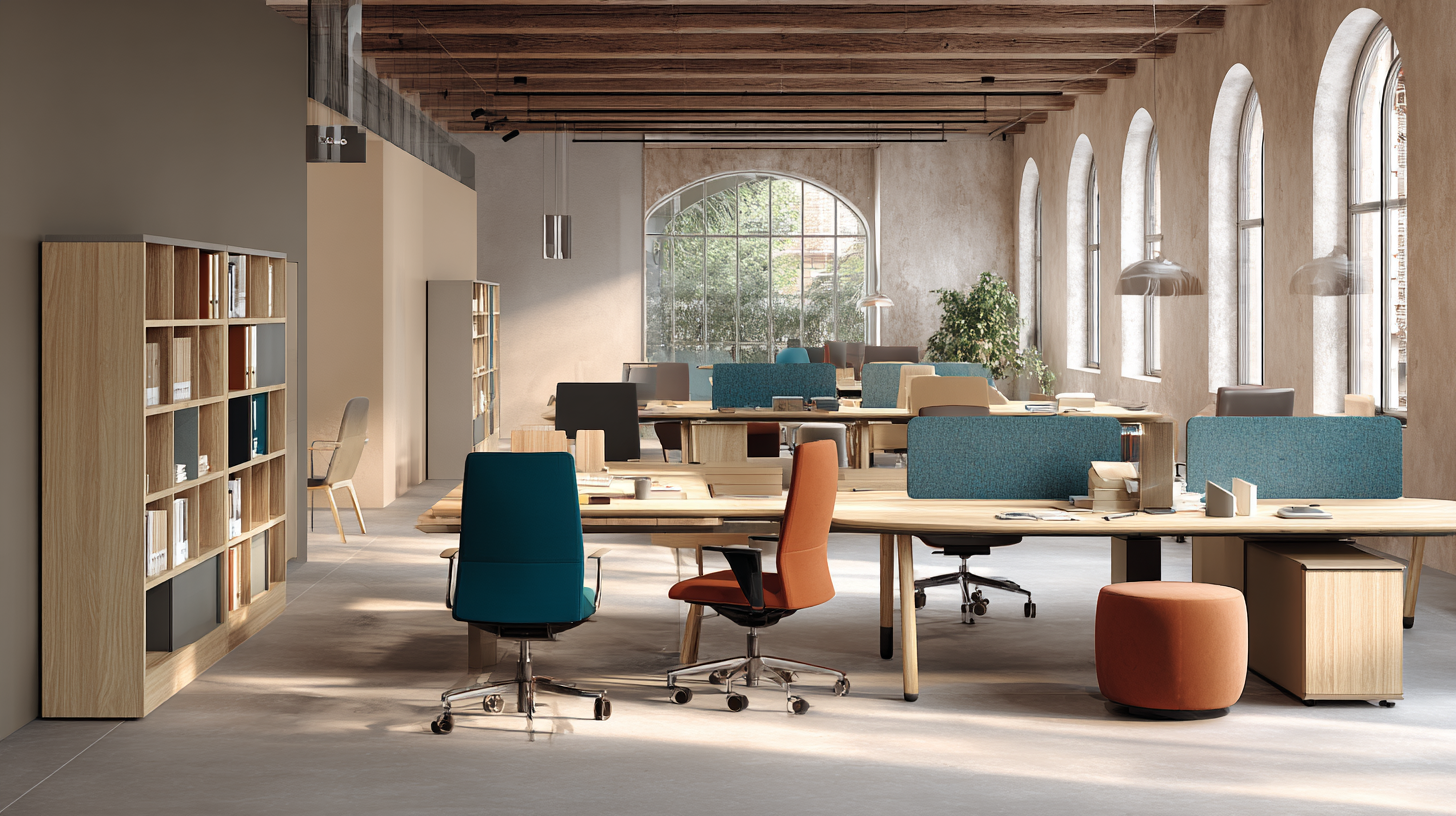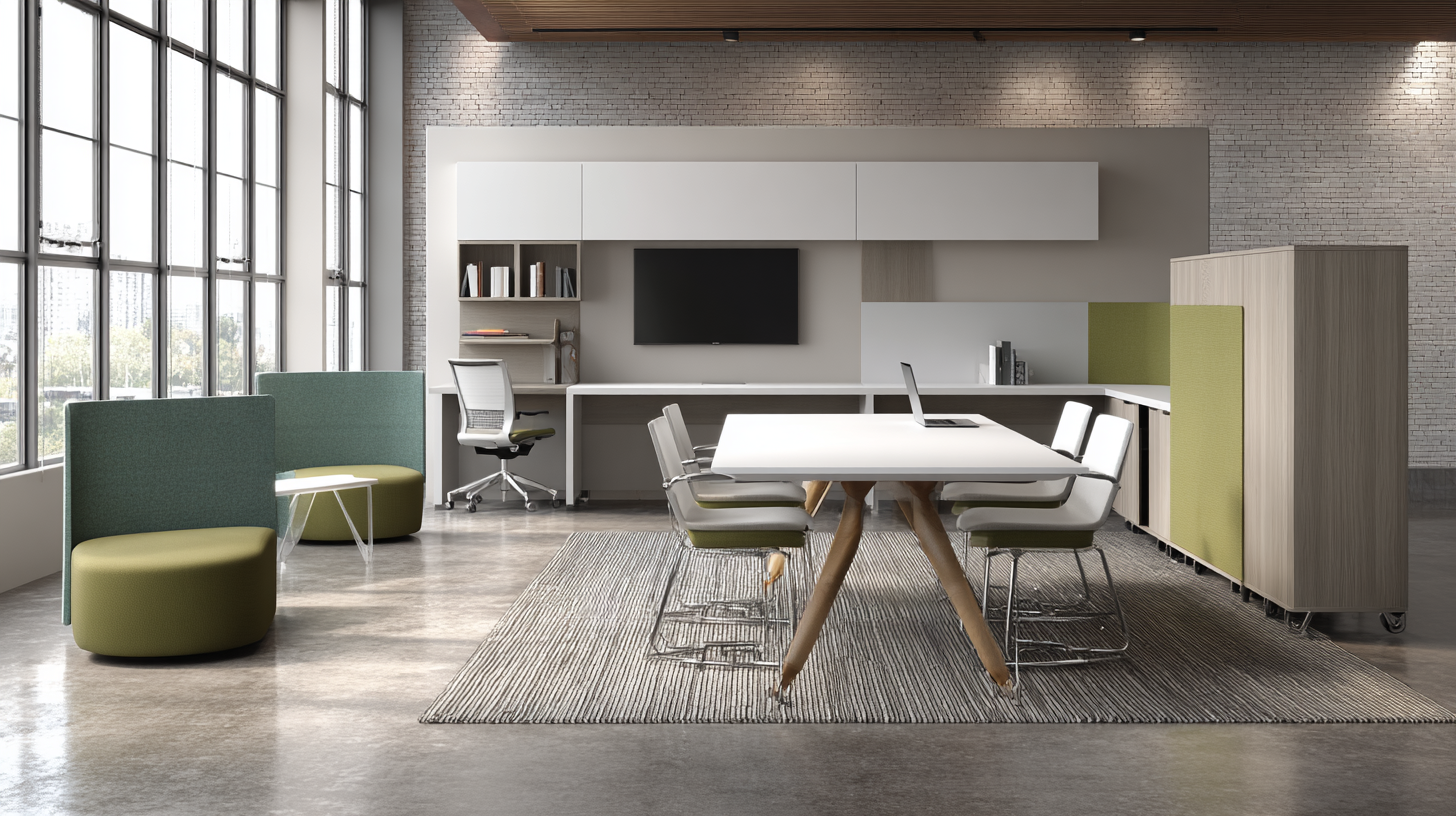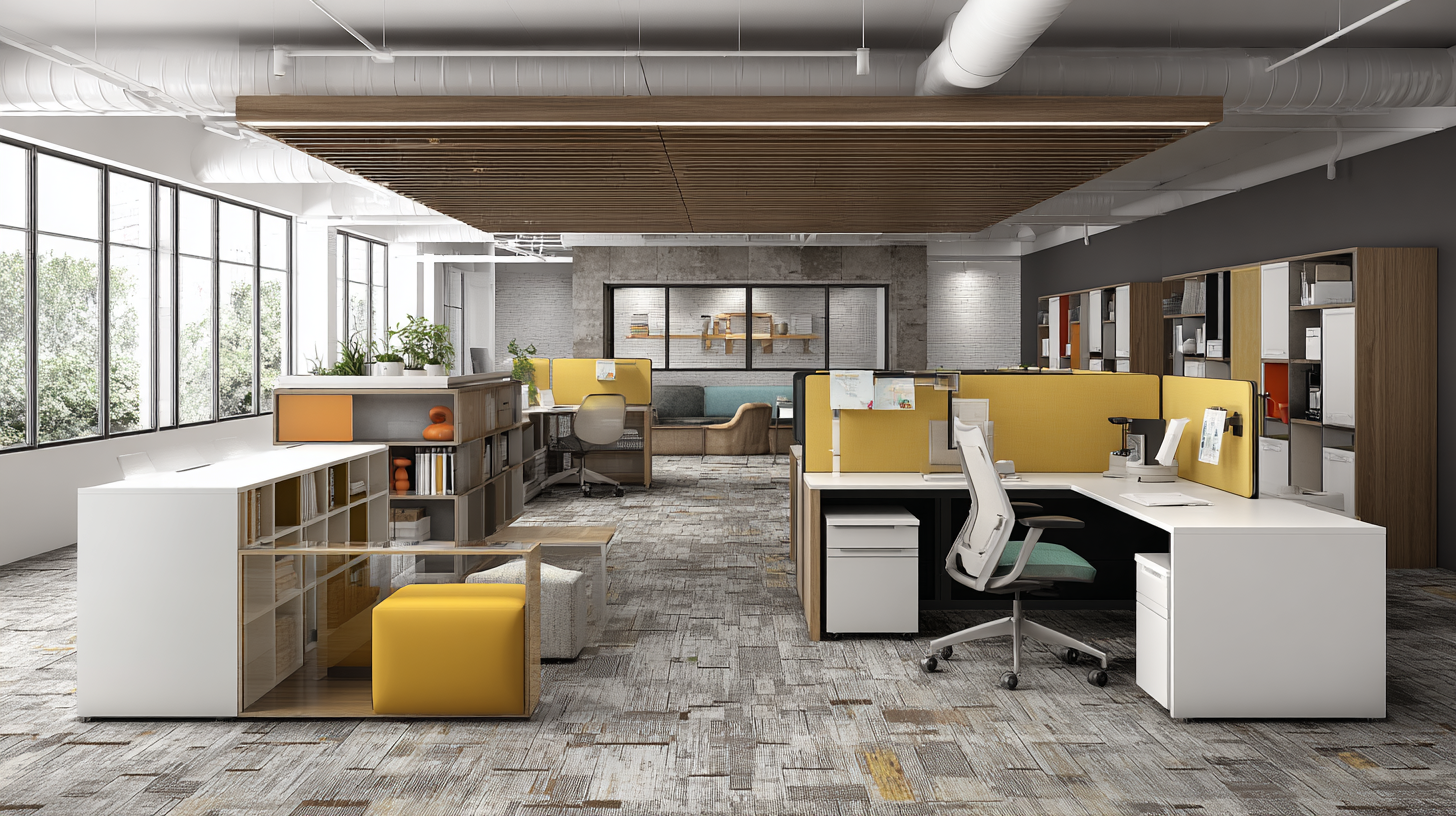In today’s rapidly evolving work environment, the demand for innovative office furniture has surged, driven by the need for enhanced productivity and employee well-being. According to a recent report by the Global Industry Analysts, the global office furniture market is projected to reach $225 billion by 2027, reflecting a compounded annual growth rate of about 5.5% from 2020 to 2027. As businesses strive to create modern workspaces that foster collaboration, creativity, and comfort, the focus on quality, particularly in products manufactured in China, has become paramount. Known for its exceptional craftsmanship and competitive pricing, Chinese-made office furniture is increasingly recognized as a global leader, meeting the dynamic needs of contemporary organizations.

By exploring innovative alternatives to traditional office furniture, we can better understand how design and functionality contribute to a productive work environment, ultimately transforming the way we work.
The landscape of office furniture manufacturing in China is undergoing a significant transformation, driven by innovative design trends that cater to the evolving needs of modern workspaces. According to the China National Furniture Association, the Chinese office furniture market was valued at over $15 billion in 2022, with a projected annual growth rate of 5.7% until 2025. This growth is largely attributed to the increasing demand for ergonomic, multifunctional, and sustainable furniture solutions that enhance productivity and well-being in the workplace.

One of the standout trends in this sector is the focus on modular design, which allows for flexible office layouts that can be easily adapted to different tasks and team sizes. Manufacturers are leveraging advanced materials and technology to create lightweight yet durable furniture, providing businesses with versatile options. Furthermore, a report by Statista highlights that 40% of companies in China are prioritizing sustainability in their purchasing decisions, prompting manufacturers to incorporate eco-friendly materials and processes into their designs. As a result, the emphasis on innovation not only addresses the aesthetic and functional aspects of office furniture but also aligns with the growing commitment to environmental responsibility.
In today's modern workspaces, the aesthetic appeal and functionality of office furniture are being revolutionized by the use of sustainable materials. From bamboo desks to recycled plastic chairs, the innovative alternatives not only enhance the visual appeal of the workplace but also promote environmental responsibility. Businesses are increasingly recognizing that choosing sustainable options can positively influence both employee morale and creativity, creating a harmonious balance between style and sustainability.
Tips for incorporating sustainable materials into your office design include selecting furniture made from reclaimed wood or upcycled materials, which not only reduce waste but also add unique character to the workspace. Consider using modular furniture that can be easily adjusted or reconfigured, allowing flexibility and adaptability to the evolving needs of your team. Additionally, integrating plants or biophilic design elements alongside sustainable furniture can further enrich the aesthetic while improving indoor air quality.
By thoughtfully selecting office furniture that emphasizes sustainable materials, companies can create an inspiring environment that reflects their commitment to eco-friendliness. Opting for furniture with a minimal carbon footprint ensures that modern workspaces are not only visually striking but also align with a growing emphasis on sustainability.
Chinese exporters have played a significant role in shaping global office furniture trends, bringing innovative designs and practical solutions to modern workspaces. As businesses evolve, the demand for flexible, ergonomic, and aesthetically pleasing furniture has soared, prompting Chinese manufacturers to respond with a range of products that align with contemporary needs. Their ability to produce high-quality furniture at competitive prices has made them key players in the international market, influencing styles and functions across various regions.
Moreover, the impact of Chinese design culture has introduced novel concepts that transcend traditional office layouts. For instance, many exporters are now integrating sustainable materials and smart technologies into their offerings, catering to the growing emphasis on environmentally friendly practices and productivity-enhancing features. As a result, international companies are increasingly adopting these innovative alternatives to create dynamic work environments that foster collaboration and creativity. This trend not only showcases the adaptability of Chinese exporters but also highlights their influence in redefining how we envision modern workspaces globally.
In today’s fast-paced work environments, ergonomics play a crucial role in promoting employee well-being and productivity. A study by the Occupational Safety and Health Administration (OSHA) indicates that a well-designed ergonomic workplace can reduce the risk of musculoskeletal disorders by up to 60%. As organizations begin to prioritize employee health, innovative office furniture solutions are emerging that emphasize ergonomic designs. Features such as adjustable desks, lumbar support chairs, and monitor stands help create a workspace that adapts to individual needs, fostering comfort and efficiency.
Tip: When selecting office furniture, look for products that offer adjustability. This allows employees to customize their workspace to accommodate their unique physical requirements, thereby reducing strain and promoting better posture throughout the workday.
Moreover, modern furniture integrates advanced materials and technology to enhance usability. Research from the National Institute for Occupational Safety and Health (NIOSH) shows that incorporating height-adjustable desks can lead to a 20% increase in employee productivity. By providing options for both sitting and standing work, organizations can encourage movement and flexibility, vital components in maintaining mental and physical health in the workplace.
Tip: Encourage employees to alternate between sitting and standing. A simple practice of switching positions every hour can significantly improve focus and reduce fatigue, making for a more dynamic work environment.

In the pursuit of creating modern workspaces that foster creativity and collaboration, innovative Chinese designs offer a fresh perspective that deviates from traditional office furniture. One compelling case study is a tech startup in Shanghai that adopted a flexible workspace concept. Instead of conventional desks and cubicles, the office features modular furniture pieces that can be easily reconfigured based on the team's needs. This adaptability not only maximizes space but also encourages spontaneous discussions and teamwork, highlighting the importance of ergonomic and multifunctional designs in a contemporary setting.
Another notable example is an architecture firm in Beijing that integrated biophilic design elements into their workspace. By incorporating furniture made from sustainable materials and including indoor plants, the office promotes a soothing environment that enhances productivity. Desks equipped with height-adjustable features allow employees to choose between sitting and standing, optimizing comfort throughout the workday. These case studies demonstrate how Chinese design principles are reshaping the office landscape, emphasizing the need for furniture solutions that align with the dynamic nature of modern work environments.
Update your browser to view this website correctly. Update my browser now
